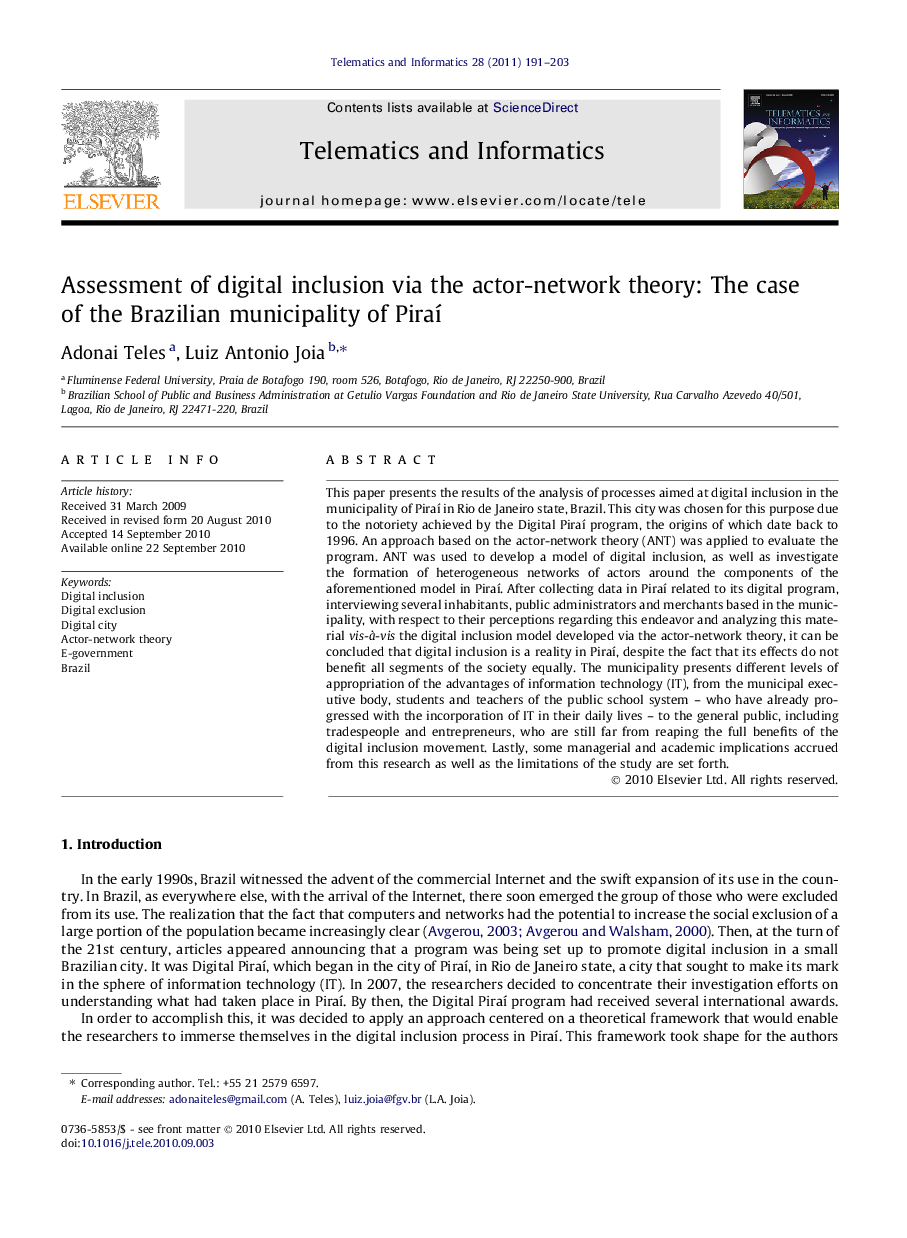| Article ID | Journal | Published Year | Pages | File Type |
|---|---|---|---|---|
| 465360 | Telematics and Informatics | 2011 | 13 Pages |
This paper presents the results of the analysis of processes aimed at digital inclusion in the municipality of Piraí in Rio de Janeiro state, Brazil. This city was chosen for this purpose due to the notoriety achieved by the Digital Piraí program, the origins of which date back to 1996. An approach based on the actor-network theory (ANT) was applied to evaluate the program. ANT was used to develop a model of digital inclusion, as well as investigate the formation of heterogeneous networks of actors around the components of the aforementioned model in Piraí. After collecting data in Piraí related to its digital program, interviewing several inhabitants, public administrators and merchants based in the municipality, with respect to their perceptions regarding this endeavor and analyzing this material vis-à-vis the digital inclusion model developed via the actor-network theory, it can be concluded that digital inclusion is a reality in Piraí, despite the fact that its effects do not benefit all segments of the society equally. The municipality presents different levels of appropriation of the advantages of information technology (IT), from the municipal executive body, students and teachers of the public school system – who have already progressed with the incorporation of IT in their daily lives – to the general public, including tradespeople and entrepreneurs, who are still far from reaping the full benefits of the digital inclusion movement. Lastly, some managerial and academic implications accrued from this research as well as the limitations of the study are set forth.
